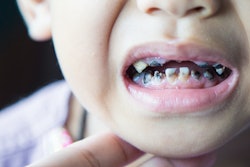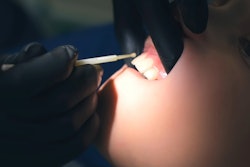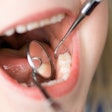
There may be a link between thinness and molar-incisor hypomineralization (MIH) in school-age children, suggesting a need for interventions to prevent nutritional deficiencies among children. The study was published on July 12 in the International Journal of Dentistry.
Furthermore, early diagnosis of MIH may lead to preventive, noninvasive treatments that improve the oral health of children who are underweight, the authors wrote.
"The results obtained suggest that MIH is related to malnutrition in school-age children,” wrote the authors, led by Alvaro García Pérez of the National Autonomous University of Mexico Laboratory of Public Health Research.
Nutritional status plays a crucial role in tooth formation. Malnutrition in early childhood can lead to fragile, hypomineralized enamel, increasing one's susceptibility to cavities. Therefore, proper nutrition during growth and development is essential for oral health, they wrote.
This cross-sectional study included 488 children ages 7 to 12 from two communities in Mexico. The World Health Organization growth standards were used to calculate body mass index (BMI) for age z-scores, with cutoffs of <-2.0, >+1.0, and >+2.0 for defining thinness, overweight, and obesity, respectively.
The presence and severity of MIH were assessed using the European Academy of Paediatric Dentistry criteria. Multiple logistic regression analyses were performed to evaluate the association, adjusting for confounding factors, they wrote.
The prevalence of MIH was 21.5%, classified into 9.6% mild, 6.4% moderate, and 5.5% severe cases. Among the children, 3.9% were underweight, 7.6% had low height for their age, 39.6% had a normal BMI, 23.6% were overweight, 28.7% were obese, and 8.2% were thin. Additionally, 16.2% of thin children had MIH, compared to 6% without it (p < 0.001), according to the results.
For children ages 7 to 10, 3.9% were underweight, while 6.9% of 7- to 10-year-olds and 9.5% of 11- to 12-year-olds were undersized for their age. Thinness was observed in 6.9% of children ages 7 to 10 and 11.9% of those ages 11 to 12. Thin children had a higher percentage of severe MIH than those of normal weight (17.5% versus 5.7%, p < 0.001).
Moreover, the adjusted logistic regression model showed that thin schoolchildren were more likely to have MIH (odds ratio [OR] = 2.76; confidence interval [CI] 95%, 1.33 to 5.73; p = 0.006) compared to those with a normal BMI, according to the results.
However, a limitation of this study was its cross-sectional design, which does not allow for establishing a cause-and-effect relationship, the authors added.
"The present study found a relationship between thinness and the presence of MIH in schoolchildren, indicating the need for strategies and interventions aimed at preventing and controlling micronutrient deficiencies in the child population," they wrote.




















